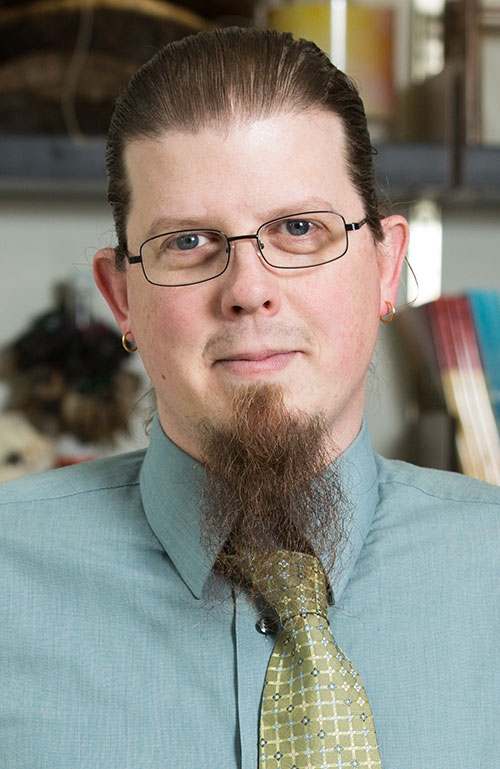You are here
Home ›WHS graduate Michael Bechtel selected to be part of team for NASA/IPAC 2019 research project

Michael Bechtel ...
More than 30 teachers, students and astronomy educators from the NASA/IPAC (Infrared Processing and Analysis Center) Teacher Archive Research Program (NITARP) attended the winter meeting of the American Astronomical Society (AAS), January 6-10 in Seattle, WA. Among those teachers attending the event was Michael Bechtel, a 1989 graduate of Waukon High School and the son of Dean and Sherry Bechtel of rural Monona who is currently an assistant professor of science education at Wartburg College in Waverly and was selected to be a member of a NITARP team that will conduct an original research project throughout this next year.
For over a decade, NITARP has partnered small groups of educators with a research astronomer for original, year-long, authentic research projects. At the AAS meeting, the educators from the 2018 class, along with some of their students, presented the results of their work over the past year. Meanwhile, the educators from the 2019 class met their teams to get started on their own projects.
From NITARP’s early years through the 2019 class, a total of 116 educators from 37 states have participated or will participate; this year sees the first participants from Iowa (Bechtel) and Mississippi. NITARP works with educators because, through them, NITARP reaches thousands of students per year with information about how science really works, what it is that NASA does, and the wealth of astronomy data that is freely available to the public.
Bechtel will be part of a team working with Dr. Luisa Rebull, an Associate Research Scientist at California Institute of Technology (Caltech) in Pasadena, CA and Director of the NASA/IPAC Teacher Archive Research Program. Additional team members include David Strasburger of Concord Academy in Concord, MA, who will serve as the mentor teacher for the team, Danny Mattern of Butler Community College in El Dorado, KS and Bob Swanson of Itawamba Community College in Tupelo, MS. This team will present its results from its year-long project, with their students, at the 2020 AAS winter meeting to be held in Honolulu, HI.
The 2018 team that recently concluded its research project with Dr. Rebull looked for young stars in a region called L1688, which is part of a large molecular cloud that is home to thousands of “baby” stars. Using long wavelength data from the Herschel Space Telescope, and combining it with data from a variety of places, including the Spitzer Space Telescope and the Two Micron All-Sky Survey, this team looked for the youngest YSOs in this region, finding three new young star candidates. The educators from the 2018 team will also now go on to conduct at least 12 hours of professional development for their colleagues in their schools and communities, at the local, regional and national levels, in print and in person.
IPAC, based at Caltech in Pasadena, CA, is leading this program. These research teams use archival data from the Spitzer Space Telescope (part of the Spitzer Heritage Archive, SHA), the NASA/IPAC Extragalactic Database (NED), the NASA Exoplanet Archive and the NASA/IPAC Infrared Science Archive (IRSA), all of which are based at IPAC, and other NASA archive holdings. Funding comes from the NASA Astrophysics Data Program.

